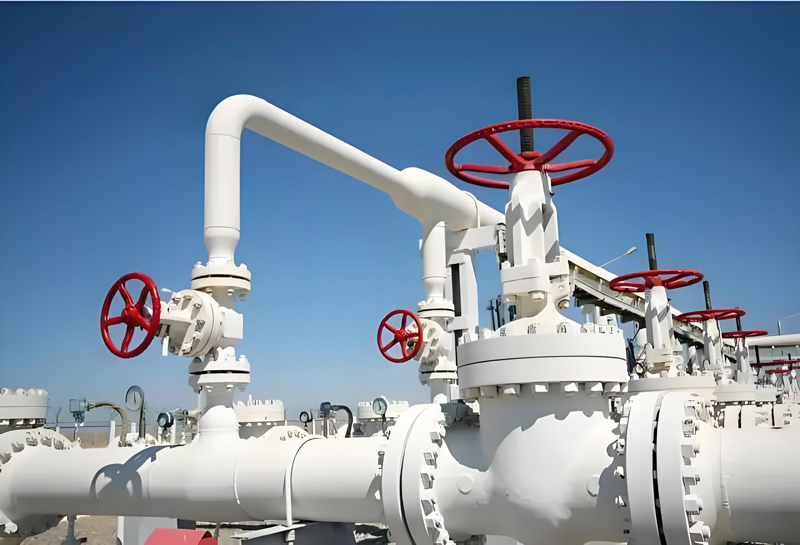Introduction
Gate valves are essential components in industrial piping systems, controlling the flow of liquids and gases. However, a common challenge faced by operators is scaling on gate valves—a phenomenon that compromises efficiency, safety, and longevity. As a trusted China gate valve factory, we understand the criticality of addressing this issue. In this article, we’ll explore what scaling is, its risks, root causes, and how advanced coating technologies can prevent it. We’ll also share expert recommendations from gate valve manufacturers and clarify the differences between globe valve vs gate valve applications.

1. What Is Scaling on Gate Valves
Scaling refers to the accumulation of mineral deposits, such as calcium carbonate, silica, or sulfates, on the surfaces of gate valves. These deposits form when dissolved minerals in fluids precipitate and adhere to metal components, especially under high temperatures or pressure changes. Over time, scaling creates a hard, crusty layer that interferes with valve operation.
For gate valves, scaling often targets critical areas like the wedge, seat, and stem. Unlike globe valves (which use a plug-and-seat mechanism), gate valves rely on a flat or wedge-shaped gate to control flow. Scaling on these components can lead to incomplete sealing or increased friction during operation.
2. The Risks of Scaling on Gate Valves
Scaling is more than a minor inconvenience—it poses serious operational and financial risks:
- Reduced Efficiency: Deposits restrict fluid flow, forcing systems to work harder and increasing energy consumption.
- Leakage: Scaling prevents the gate from fully closing, leading to leaks and potential environmental hazards.
- Corrosion Acceleration: Deposits trap moisture, accelerating corrosion beneath the scale layer.
- Increased Maintenance Costs: Frequent cleaning or part replacements drive up downtime and expenses.
- Safety Hazards: In extreme cases, valve failure due to scaling can cause system overpressure or shutdowns.
For industries like oil and gas, chemical processing, or water treatment, these risks are unacceptable. This is why leading gate valve factories prioritize scaling prevention.
3. Why Does Scaling Occur on Gate Valves
Understanding the causes of scaling is key to prevention:
- Water Quality: Hard water with high mineral content is a primary culprit.
- Temperature Fluctuations: Heating or cooling fluids can trigger mineral precipitation.
- Low Flow Velocities: Stagnant conditions allow minerals to settle on valve surfaces.
- Material Compatibility: Uncoated carbon steel or iron valves are more prone to scaling than stainless steel or coated alternatives.
- Poor Maintenance: Infrequent inspections allow deposits to accumulate unnoticed.
Compared to globe valves, which handle throttling and frequent adjustments, gate valves are often used in on/off applications. However, both valve types are vulnerable to scaling without proper protection.
4. How to Prevent Scaling on Gate Valves
Proactive measures can mitigate scaling risks:
- Water Treatment: Use softeners or chemical inhibitors to reduce mineral content in fluids.
- Regular Maintenance: Schedule inspections and cleaning to remove early-stage deposits.
- Material Upgrades: Opt for corrosion-resistant alloys like stainless steel or duplex steel.
- Operational Adjustments: Maintain optimal flow velocities to minimize stagnation.
- Advanced Coatings: Apply specialized anti-scaling coatings to valve surfaces.
Among these solutions, coating technology stands out for its cost-effectiveness and long-term performance.
5. How Coatings Prevent Scaling on Gate Valves
Coatings create a protective barrier between valve surfaces and mineral-rich fluids. Here’s how they work:
- Non-Stick Surface: Coatings like PTFE (Teflon) or epoxy reduce surface roughness, making it harder for minerals to adhere.
- Chemical Resistance: Certain coatings neutralize reactive ions in fluids, preventing crystallization.
- Thermal Stability: High-temperature coatings withstand thermal cycling without degrading.
- Corrosion Protection: By shielding metal from moisture, coatings combat both scaling and rust.
Leading China gate valve manufacturers use advanced techniques like plasma spray or electroless nickel plating to apply durable, uniform coatings. For instance, a gate valve factory might use HVOF (High-Velocity Oxygen Fuel) coating to achieve a ultra-smooth finish on wedge surfaces.
6. Expert Recommendations from Gate Valve Manufacturers
To maximize scaling resistance, follow these tips from industry experts:
1. Choose the Right Coating: Match the coating material to your fluid type. For example:
– PTFE for chemical resistance.
– Ceramic coatings for high-temperature applications.
– Nickel-based coatings for abrasive fluids.
2. Partner with Reputable Suppliers: Work with certified gate valve manufacturers to ensure coating quality and compliance.
3. Combine Solutions: Pair coatings with water treatment for enhanced protection.
4. Monitor Performance: Use sensors to track pressure drops or flow changes that signal scaling.
5. Educate Teams: Train staff to identify early signs of scaling during maintenance.
Additionally, consider the valve type: globe valves vs gate valves. While coatings benefit both, gate valves (used primarily for isolation) may require thicker coatings on the gate, whereas globe valves (used for flow regulation) need coatings on the plug and seat.
Conclusion
Scaling on gate valves is a pervasive issue with costly consequences. By understanding its causes and implementing advanced coating technologies, industries can dramatically extend valve lifespan and system reliability. As a leading China gate valve factory, we emphasize the importance of proactive maintenance, material selection, and collaboration with trusted gate valve manufacturers. Whether you’re comparing globe valve vs gate valve applications or seeking tailored anti-scaling solutions, the right strategy will ensure optimal performance and ROI.
Take Action Now: Contact our experts to explore custom-coated gate valves designed to resist scaling, corrosion, and wear—engineered for excellence by a top-tier gate valve manufacturer.
Post time: Apr-07-2025






